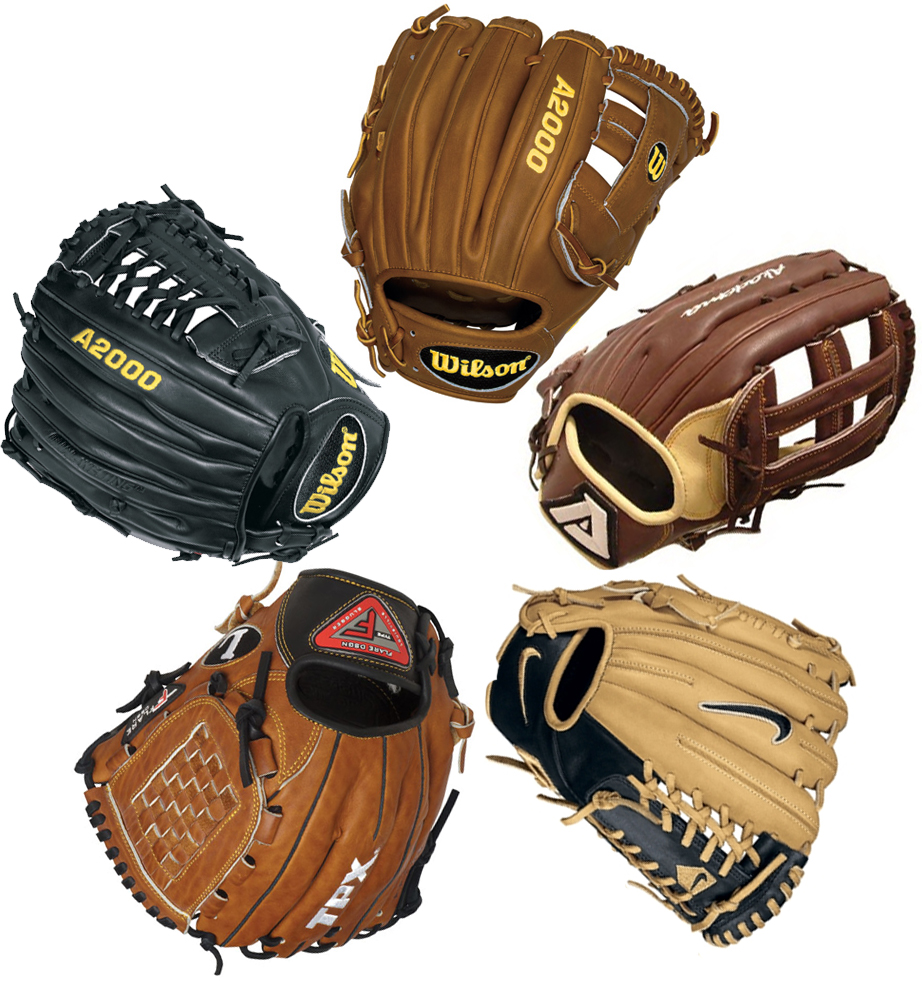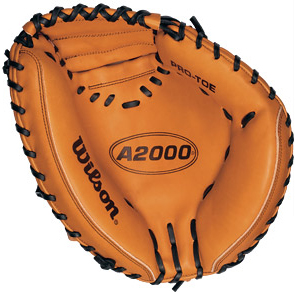 Handing down your old baseball or softball glove to your kids for a game of catch in the yard can be a loving rite of passage…and something moms and dads look forward to for a long time. But when it comes to serious little league games and beyond, that worn out old glove just isn’t going to pass muster. At some point, your kids are going to need a new glove, and hey…you might need one too! But to most new baseball moms and dads, all gloves look exactly the same.
Handing down your old baseball or softball glove to your kids for a game of catch in the yard can be a loving rite of passage…and something moms and dads look forward to for a long time. But when it comes to serious little league games and beyond, that worn out old glove just isn’t going to pass muster. At some point, your kids are going to need a new glove, and hey…you might need one too! But to most new baseball moms and dads, all gloves look exactly the same.
So how do you tell baseball gloves apart, let alone find one that meets your needs and fits into your budget?
Glove Features:
Even I’ll admit that almost all baseball gloves have a similar look. But there are three main features of a glove’s build that make it unique, and determine its use and performance in the field. Recognize them, and an entire world of differences will open up before you:
- Webbing – This connects the thumb of the glove to the fingers and expands
 the catching area well beyond the hand. There are many, many different types of webs, each with their own cool name (like the Modified Traz-eze web!), but they all generally fall within two categories:
the catching area well beyond the hand. There are many, many different types of webs, each with their own cool name (like the Modified Traz-eze web!), but they all generally fall within two categories:
- Closed Webs feature tight woven patterns of leather that create a solid, strong web.
- Open Webs use loose cross patterns of leather or leather lacing to create spaces between each piece of leather webbing, for a web you can see through.
- Pocket – The indentation in the palm of the glove where the ball rests when it’s caught. Pockets range from shallow to deep, and pocket depth can affect your hold on the ball, as well as determine how long it takes to retrieve it from the pocket.
 Back– The wrist closure of the glove.
Back– The wrist closure of the glove.
- Open backs have a space above the Velcro adjuster for more flexibility around the wrist.
- Closed backs have no space for more strength and support.
Glove Patterns:
Every baseball glove on the market uses these three features in various combinations to create a unique glove “pattern.” This pattern, along with the size of the glove, tailors its performance to meet the needs of players at different positions around the diamond. For instance;
- Outfielders need a longer reach, wider catching area, and added support to catch pop-flys. To meet their needs, outfielder glovestypically feature:
- A closed back for strength and wrist support
- An open web to see through when catching fly balls, filtering out glare from sunlight or stadium lights
- A deeper pocket for better hold on the ball
- Infielders need to stop hard hit shots and make fast throws. To get that kind of performance, infielder gloves generally feature:
- Shallower pockets for faster catches and quicker throws
- Open backs for added wrist flexibility and faster movements
- Open webs for 3rd basemen, to help field hard hit balls down their baseline,
- Closed webs for short stops, 1st, and 2nd basemen, for faster transfers from glove to throwing hand
- Pitchers are less specific in their needs, and generally rely on personal preference in a glove pattern. But almost all pitching gloves use a closed web to help hide the ball and grip from the batter.
 Catchers have a very specific role behind the bag, and all they’re typically worried about is catching the ball and not breaking their hand. That’s why catcher’s mitts are unique and finger-less, designed to protect the hand with heavy padding. A shallow pocket provides easy access to the ball for fast throws, and a closed web snaps shut when catching pitches.
Catchers have a very specific role behind the bag, and all they’re typically worried about is catching the ball and not breaking their hand. That’s why catcher’s mitts are unique and finger-less, designed to protect the hand with heavy padding. A shallow pocket provides easy access to the ball for fast throws, and a closed web snaps shut when catching pitches.
When choosing a new baseball glove, it’s also important to consider the leather it’s built with. Leather quality has a dramatic affect on the glove’s durability, longevity, softness, performance, look, feel, and break-in time. It also happens to be a central factor in its price! High-end gloves with pro-stock, pro-choice leather, like the Wilson A2000, are definitely worth the price as they practically last forever, and can dramatically improve your game. However, if you’re looking for a youth baseball glove for your son or daughter, who is just starting out, playing in smaller leagues, or still growing rapidly, it’s not practical to buy such an expensive glove. Instead, check out Mizuno Prospect Series baseball gloves or Franklin baseball gloves, for a more affordable, but still high quality option.
This is a great year for baseball gloves, and there are tons of new 2012 baseball gear and gloves that you and your kids are sure to love! So look around, and use all of your new-found baseball glove knowledge to find something perfect. And if you still need some more help, be sure to check out our complete Baseball Glove Buying Guide.
|
By Brandon Porter.Brandon is a product specialist at Sports Unlimited. |


This is a very good article when it comes to trying to find the right glove to buy! There are many different brands and types out there and each person has their own preference.
I have played baseball all my life and continue to do so at the college level and have gone through many baseball gloves. My favorite is by far the Rawlings Pro Preferred.(They are expensive but I have used mine for 6years!)
When buying a new glove I like to be able to see the glove in person, whether it be another teammates or at a store. I like to be able to feel the leather and the stiffness of the glove. I like a nice stiff glove, I think this means it will last longer. Don’t go out and buy an expensive stiff glove for a younger child though, they will never be able to break it in! After buying the glove the next important process is breaking the glove in. I like to use something called Leather CPR and just playing good ol catch. Go to http://www.baseball-gloveoil.com for more info and breaking in a new glove and what types of oil/conditioner to use to quicken the break in process.
Like mentioned in the article there are position specific gloves. I wouldn’t invest in one if you are buying a glove for a small child. Let them “settle” into a position before spending lots of money on different gloves.
Hope this helps out!